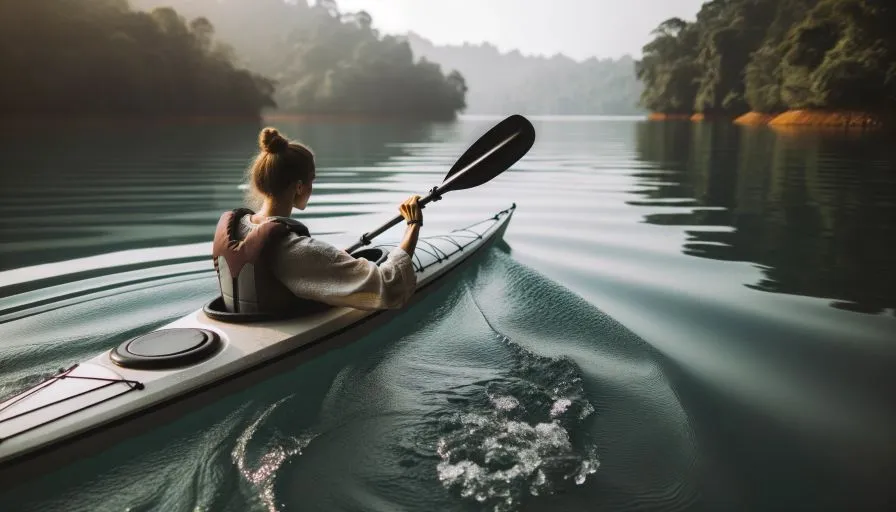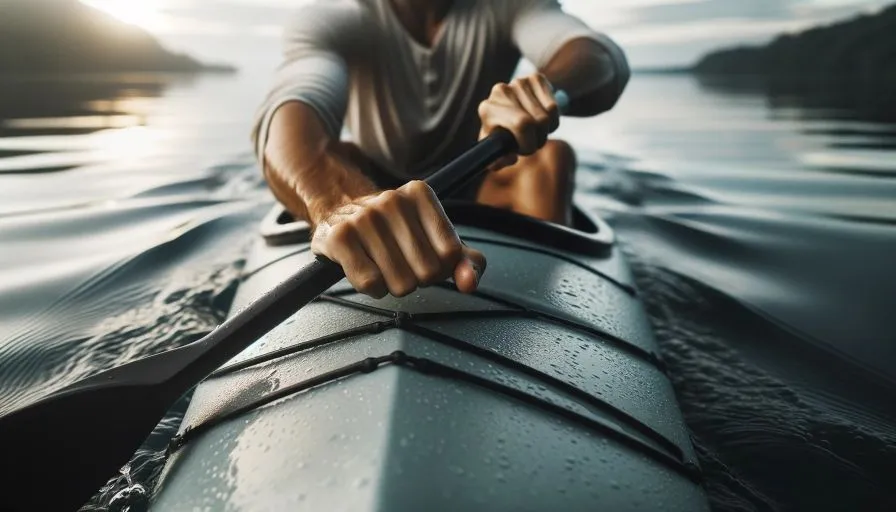Kayaking is a thrilling and rejuvenating water sport. It allows one to explore waterways, rivers, and lakes like never before. But the magic of kayaking is heavily dependent on one pivotal element: the paddle and how it is held. This article aims to demystify the age-old question: how to hold a kayak paddle? Dive into this comprehensive guide and propel your paddling journey from novice to proficient.
Guide to Hold a Kayak Paddle
Structure of the Kayak Paddle
Understanding the very anatomy of a kayak paddle is essential for any budding kayaker. At its core, the paddle comprises three primary components:
- Blades: The wide, flat sections that come into direct contact with the water.
- Shaft: The long, cylindrical section that connects the two blades.
- Grip: The specific area on the shaft where paddlers should place their hands for the most effective paddling.
Blade Orientation: Symmetrical or Asymmetrical Blades

Paddle blades can either be symmetrical or asymmetrical in design.
- Symmetrical Blades: These blades have an even shape on both sides, making them versatile for various paddling techniques.
- Asymmetrical Blades: These are more angled and are designed for specific strokes, allowing for more efficient paddling.
It’s crucial to also be aware of the distinction between concave or flat blades.
- Concave Blades: Have a slight inward curve, allowing for a stronger bite in the water.
- Flat Blades: Are even on both sides, offering consistent resistance during strokes.
Paddle Blade Orientation and Alignment
Orientation of blades plays a pivotal role in determining how effectively one navigates waters. The paddle blade’s orientation can either be parallel to each other or slightly feathered. Feathered blades are rotated, with one blade being vertical while the other is horizontal. Proper paddle blade alignment ensures less wind resistance and seamless paddle rotation.
Holding and Hand Positioning: The Cornerstones of Paddling

Holding a kayak paddle correctly is the first step towards successful and experienced paddling. It’s not merely about grasping the paddle; it’s about proper hand placement, ensuring relaxed hands, and maintaining a proper posture.
Table: Key Points for Holding a Kayak Paddle
| Components | Importance | Tips |
|---|---|---|
| Hand positioning | Determines the force and direction of each stroke | Maintain equal distance from both blades |
| Correct hand placement | Ensures effective paddle handling and rotation | Hold the paddle with a firm yet relaxed grip |
| Relaxed hands | Prevents fatigue and ensures longevity in paddling | Allow fingers to wrap naturally around the shaft |
Paddle Handling and Technique
To master the art of paddling, one must be well-versed in the following:
- Paddle rotation: This technique involves twisting the paddle shaft with one hand while keeping the other stationary. This allows for swift and smooth transitions between strokes.
- Adjusting grip on the shaft: Depending on the stroke or the current, you might need to adjust your grip. Remember, the grip area is where you exert the most control over the paddle.
- Proper paddling technique: This encompasses the entire motion of paddling, from the catch phase (when the blade enters the water) to the release (when it exits).
Navigating Waters: The Role of Paddle Blade Type Awareness
Paddle blade type awareness is crucial when navigating different waters. For instance, flat blades might be better for calm lakes, while concave ones could offer an advantage in fast-flowing rivers. Knowing the difference and adjusting accordingly can make or break your kayaking experience.
Why is Paddle Holding Important?
Paddle holding importance cannot be stressed enough. Proper paddle holding ensures:
- Safety: A firm grip prevents accidental drops, ensuring you’re always in control.
- Efficiency: With the correct grip and technique, paddlers can move faster and with less effort.
- Longevity: Proper grip reduces the risk of injuries and strains, allowing for longer and more enjoyable paddling sessions.
Conclusion: The Symphony of Kayak Paddling Technique
Kayaking is more than just paddling through waters; it’s a dance where the paddle is your partner. The melody of this dance lies in the paddle blade orientation, the rhythm in your hand placement, and the beats in your strokes. So, the next time you find yourself with a paddle in hand, remember: holding it right is the first step to a harmonious kayaking adventure.
Read More:

Meet Hudson, an enthusiastic writer and the Chief Editor at Outdoor Bravo Blog. Hudson’s heart belongs to the world of kayaking and kayaks, fueled by his insatiable love for nature and adventure.
